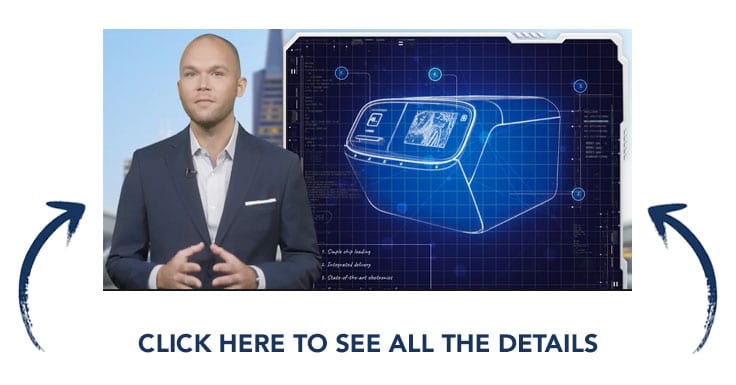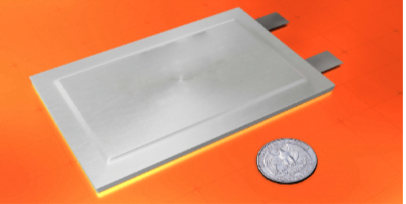Understandably, many investors right now are unsure where to place their money to protect against inflation. Certain industries have historically shown to be more resistant to inflation and have aided investors in navigating the turbulence. Between 1973 and 2021, the energy industry has outperformed inflation 71% of the time, delivering an annual average of 9.0%. REITs have outperformed inflation 67% of the time and produced an average yearly return of 4.7%. Metals and mining firms have outpaced inflation 47% of the time, with an average annual return of 8.0%.
However, it’s essential to know that investors are not strictly limited to the three sectors I mentioned above. Various types of businesses have shown resiliency to inflation in the past. This makes it easier to pick trustworthy stocks that can battle inflationary pressures this year and beyond. I’ve recognized a few organizations that have not only established themselves on the stock exchange but have also managed to preserve customer demand, making their stock profitable – even during periods of high inflation.
Moving on, let’s have a look at three well-performing, dividend-paying stocks I’ve chosen that top analysts consider to be wise additions to our portfolios:
Prologis Inc (PLD)
Prologis, Inc (PLD) is a warehouse-focused REIT based in San Francisco, CA. In June of 2011, PLD was founded by the combination of AMB Property Corporation and ProLogis, making for the world’s largest industrial real estate corporation. PLD held 4,703 properties totaling 984 million square feet in 19 countries across North America, Latin America, Asia, and Europe as of 2020. PLD‘s business approach focuses on warehouses in large urban centers where land is limited. It has a population of approximately 5,000 renters. In 2016, PLD established a venture capital unit.
Despite a few revenue misses, PLD has enjoyed a great earnings history otherwise, absolutely crushing EPS estimates, especially for its last two quarters: beaten by 165.53% last quarter and 166.29% the quarter before that. PLD has year-over-year revenue growth of 6.64%, EPS growth of 214.29%, and profit margin growth of 193.71%. Its current quarter shows us $1.1 billion in sales, at a 64 cents-per-share EPS. The consensus price target for PLD from analysts that provide 12-month predictions is 165.50, with a high estimate of 196.00 and a low of 131.00. The median estimate is up 47.24% from current pricing, and the consensus gives PLD a sturdy buy rating. PLD has a current dividend yield of 2.81%, with a quarterly payout of 79 cents per share.
Costco Wholesale Corp (COST)
Costco Wholesale Corp (COST) is a global corporation based in the U.S. that owns and runs a chain of membership-only big-box retail locations. As of 2016, COST was the world’s fifth-biggest retailer and the leading retailer of choice and prime beef, organic groceries, rotisserie chicken, and wine. COST was rated #10 on the Fortune 500 list of the top firms in the U.S. by total revenue in 2021. Although its Kirkland Signature house label carries the name of its old site in Kirkland, Costco’s global headquarters are in Issaquah, Washington, and in 1983, the firm established its first warehouse in Seattle, WA.
COST has shown some muscle in the face of market adversity. For example, COST has made an example of exceeding analysts’ earnings forecasts. It has bested projections for four consecutive quarters, most recently beating EPS by 0.71% and revenue by 2.23%. Year-over-year, COST offers 16.16% revenue growth and 10.55% diluted EPS growth. Until reporting again, COST boasts $70.7 billion in sales, at $4.08 per share. The analysts offering 12-month price forecasts for COST have a median target of 546.50, with a high of 650.00 and a low of 440.00. The median estimate represents an 18.00% increase from its last price, and COST comes with a well-earned consensus buy rating. Currently, COST has a dividend yield of 0.78%, with a quarterly payout of 90 cents per share.
Coca-Cola Co (KO)
The Coca-Cola Co (KO) is a well-known global beverage firm based in the U.S. best known for producing its signature Coca-Cola drink. Other non-alcoholic beverage concentrates, syrups, and alcoholic drinks, are manufactured, sold, and marketed by KO. The original recipe and brand were sold to Asa Griggs Candler in 1889 for $2,300 — how much would that amount equate to today? — who went on to build the Coca-Cola Company in Atlanta in 1892. Since 1889, KO has run a franchised distribution system. KO primarily makes syrup concentrate, which is distributed to various bottlers with exclusive territories worldwide. Coca-Cola Refreshments is KO‘s leading bottler in North America.
KO is an excellent example of a stock that has both performed well during difficult times and maintained an optimistic outlook. These are great traits for any business, but it helps when your product is already worth billions and beloved worldwide. KO, like COST, has bested analysts’ forecasts on earnings for the last four consecutive quarters. KO most recently surpassed EPS estimates by 10.44% and revenue expectations by 6.82%. KO shows healthy year-over-year growth in critical areas, which is only projected to continue. KO has a median price target of 70.00, with a high of 76.00 and a low of 64.00 among the analysts that issue 12-month price projections. The consensus projection reflects a 15.32% increase from the most recent price, and the experts agree strongly that we should buy stock in KO. As of now, KO has an annual dividend yield of 2.90%, with a quarterly payout of 44 cents per share.
Read Next – #1 Takeover Target for November
Cytarbine.
That’s the name of the most popular drug doctors prescribed last year to fight leukemia.
Problem is, Cytarbine is a “chemical drug” that was patented almost 60 years ago. Chemical drugs are like nuclear weapons. Drop them inside your body and everything gets destroyed. It’s why people say,”the chemo will get you before the cancer does.”
It gets even worse…
75% of all cancer drugs sold by Big Pharma are old chemical drugs like Cytarbine.
Well guess what?
On September 10, 2018, a tiny Cambridge biotech firm won a patent on a new kind of treatment that can “Cut & Paste” any disease from your body.
It’s like this tiny biotech invented the iPhone while Big Pharma is still selling flip phones.
And our research proves that anyone who gets in today could turn every $1,000 into $1.54 million (or more)!
The Big Pharma companies that have the most to lose from this new treatment are Bristol Meyers, Pfizer, Sanofi, Novartis and Teva.
Sanofi has their own new drug on the market. Pfizer last month bought Array Biopharma, which we recommended. That leaves Novartis, Teva and Bristol Meyers.
We think Bristol Meyers is the most likely buyer because their new leukemia drug recently flunked out of FDA trials.
A deal could happen any day.
A takeover of the company could hand investors gains of up to $31,250 in the next 90 days…
But we would be ok if there wasn’t a deal.
That’s because Investor’s Business Daily estimates this is a $75 billion market.
Yet right now, its stock price is just a tiny fraction of that size.
CLICK HERE to see how you can profit from this rare opportunity>>>





